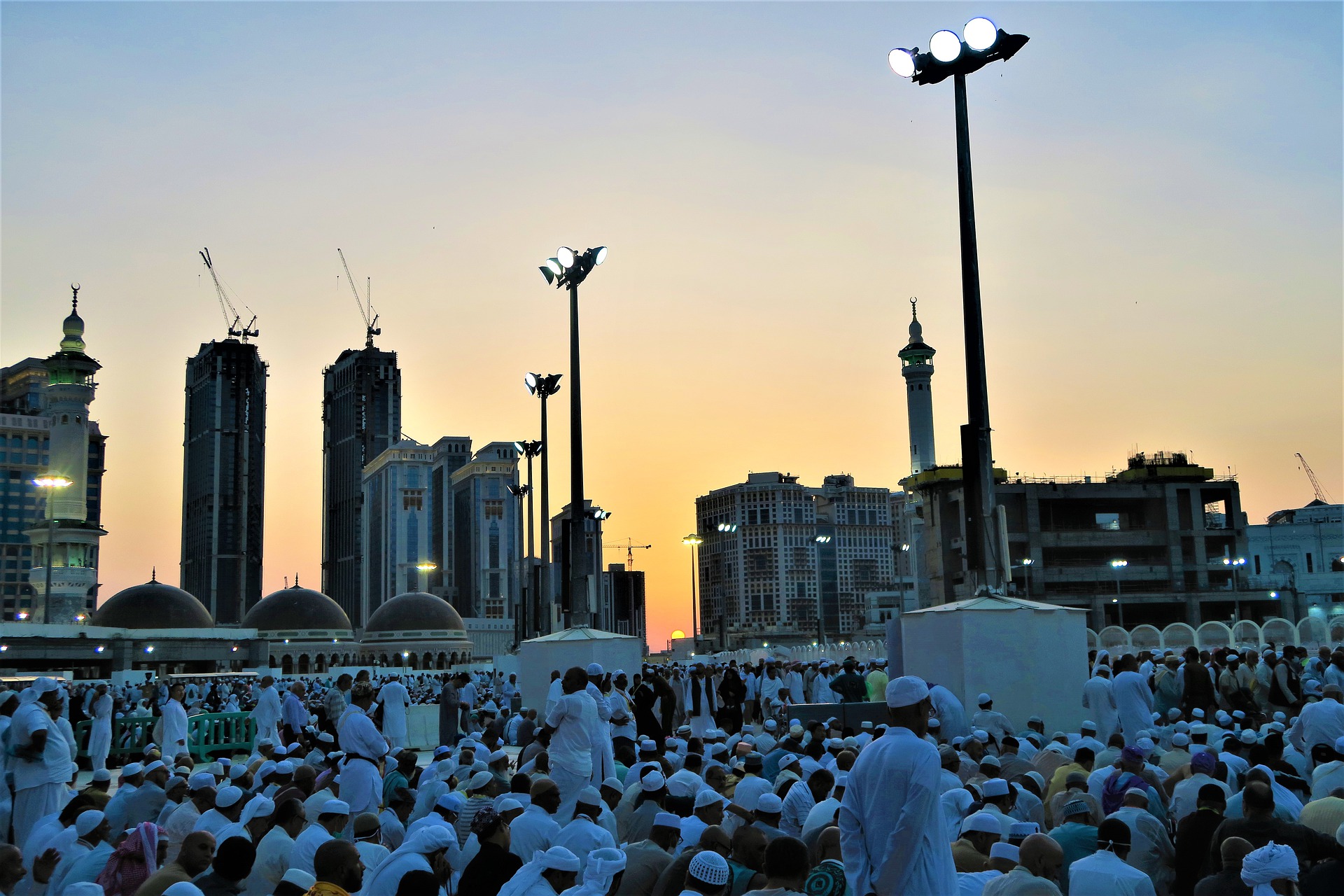Comprehensive Meaning and Usage, Understand Examples of Application
The use of the word comprehensive is more often used in academic and news circles. So what does comprehensive mean? Check it out here KLovers.

Kapanlagi.com - For all Muslims, performing the five daily prayers is a mandatory act that must be carried out. The high position of prayer for Muslims is likened to the pillar of Islamic religion. Prayer, according to its language, means supplication or engaging in activities of supplicating to Allah SWT. There are five mandatory times to perform prayer, which are dawn, noon, afternoon, sunset, and night.
Now, in addition to knowing that, KLovers also need to know other things about prayer. Not only knowing the meaning of prayer according to its language, but also the requirements for a valid prayer, the pillars of prayer, and the proper way to perform prayer. This is also done so that the prayer we perform can be accepted well by Allah SWT.
READ ALSO: Understanding Salat According to Its Language and How to Perform It
So, for KLovers who want to know more about prayer according to its language, which means supplication, here is an explanation along with other things about prayer.

Illustration (credit: pixabay)
Sholat is a special worship in Islam, because the command to perform it was directly received by Prophet Muhammad from Allah SWT. Performing sholat is the first sign of Islam, while leaving sholat is the first sign of disbelief for oneself.
The meaning of sholat in Bahasa is prayer, while in terms of sholat is an act and speech that begins with takbir and ends with salam according to the requirements. In an explanation cited from Wikipedia, linguistically, the word sholat comes from Arabic which means prayer.
In Surah At Taubah verse 103 becomes the foundation of this expression interpretation. In this verse, the word sholat is interpreted as prayer. The meaning of sholat as prayer is also obtained from the actions and words held during the sholat activity which is a series of prayers.

Illustration (credit: pixabay)
What about the evidence regarding prayer? It is not only important to know that prayer in its language meaning is just to pray, but also the evidence that discusses prayer. It is known that the word or phrase 'prayer' is only mentioned 83 times in the Quran.
The command to perform prayer is found in several verses, namely, Surah Al-Hajj verse 77, Surah Al-Baqarah verses 43 and 238, Surah An-Nisa verse 103 and Surah Al-'Ankabut verse 45. However, Surah Al-Hajj verse 77 does not directly give the command to pray, it only mentions two prayer movements, namely bowing and prostrating.
And here are some evidence that discusses prayer that must be performed by Muslims:
1. "Tell the believers to perform prayer, to give charity from what We have given them, secretly and openly, before the Day comes when there will be no bargaining or friendship." (Ibrahim 14:31)
2. "Indeed, prayer prohibits immorality and wrongdoing, and the remembrance of Allah is greater. And Allah knows what you do." (Al-'Ankabut 29:45)
3. "Then there came after them successors who neglected prayer and pursued desires; so they are going to meet evil." (Maryam 19:59)
4. "Indeed, mankind was created anxious: When evil touches him, impatient, And when good touches him, withholding [of it], Except the observers of prayer - Those who are constant in their prayer." (Al-Ma'arij 70:19-23)
5. "Establish prayer at the decline of the sun [from its meridian] until the darkness of the night and [also] the Quran of dawn. Indeed, the recitation of dawn is ever witnessed." (Al-Isra 17:78)

Illustration (credit: pixabay)
Yes, although KLovers know that the procedures for obligatory and sunnah prayers are almost the same, only differing in intention and number of rak'ahs. However, there are still differences among them. These differences include the time of execution. Here is an explanation of the time of execution and the number of rak'ahs for each obligatory prayer.
1. Fajr Prayer
The Fajr prayer can be performed after one-third of the night has passed and before sunrise. The Fajr prayer consists of 2 rak'ahs.
2. Dhuhr Prayer
The Dhuhr prayer can be performed when the sun has risen and started to move towards the west. The time limit for performing this prayer is until the time of Asr.
The Dhuhr prayer consists of 4 rak'ahs.
3. Asr Prayer
The Asr prayer can be performed when the sun starts to move towards the west. This can be marked by the shadow of an object being longer than the object itself. The time limit for performing the Asr prayer is when the time for Maghrib prayer begins.
4. Maghrib Prayer
The Maghrib prayer is the shortest obligatory prayer. It can only be performed after the sun has set and until the redness in the sky disappears. The Maghrib prayer consists of 3 rak'ahs.
5. Isha Prayer
In contrast to the Maghrib prayer, the Isha prayer is the longest prayer. The Isha prayer can be performed after the time for Maghrib prayer has ended and before the time for Fajr prayer begins. The Isha prayer consists of 4 rak'ahs.
Isya Prayer
Unlike Maghrib prayer, Isya prayer is actually the longest prayer time.Isya prayer can be performed after Maghrib prayer time has ended and before Subuh prayer time begins.Isya prayer is performed in 4 rak'ahs.

Illustration (credit: pixabay)
In performing prayer, there are what is called the conditions for the validity of prayer and the pillars of prayer. Yes, these conditions for the validity of prayer must be known so that the prayer we perform is valid and can be accepted by Allah SWT. In addition, the pillars of prayer are stages in prayer so that movements during prayer can be carried out in an orderly and appropriate manner. The following are the conditions for the validity of prayer and its pillars:
- Conditions for the Validity of Prayer
1. Being a Muslim
2. Clean from major and minor impurities
3. Having reached puberty and being sane
4. Knowing the procedure for prayer
5. Already in the time of prayer
6. Facing the qiblah
7. Covering the nakedness according to the Islamic law, for women the entire body except for the face and palms of the hands, and for men from the navel to the knees.
- Pillars of Prayer
1. Standing for those who are still able
2. Pronouncing the intention in the heart
3. Pronouncing takbiratul ihram (the first takbir)
4. Reciting Al-Fatihah in every rak'ah
5. Bowing and standing still
6. Reciting iktidal after bowing and standing still
7. Performing two prostrations
8. Sitting between two prostrations
9. Sitting for the final tashahhud
10. Reciting the final tashahhud prayer
11. Reciting the Prophet's salawat during the final tashahhud
12. The first salam
13. Must orderly perform the pillars of prayer in sequence

Illustration (credit: pixabay)
As is known, before performing prayer, especially the obligatory ones, KLovers are required to recite the intention first. And here are the intentions for the 5 daily prayers or obligatory prayers:
1. Intention for Fajr Prayer
"Ushalli fardhas subhi rak'ataini mustqbilal qiblati adaa-an (ma'mumam/imaaman) lillaahi ta'aalaa.Allaahu akbar."
Meaning: I intend to perform 2 raka'at of Fajr prayer facing the qibla for the sake of Allah Ta'ala/Ma'mum for the sake of Allah Ta'ala/Imam for the sake of Allah Ta'ala.
2. Intention for Dhuhr Prayer
"Ushalli fardhadz dzuhri arba'a raka'aatin mustqbilal qiblati adaa-an (ma'mumam/imaaman) lillaahi ta'aalaa.Allaahu akbar."
Meaning: I intend to perform 4 raka'at of Dhuhr prayer facing the qibla for the sake of Allah Ta'ala/Ma'mum for the sake of Allah Ta'ala/Imam for the sake of Allah Ta'ala.
3. Intention for Asr Prayer
"Ushalli fardhal ashri arba'a raka'aatin mustqbilal qiblati adaa-an (ma'mumam/imaaman) lillaahi ta'aalaa. Allaahu akbar."
Meaning: I intend to perform 4 raka'at of Asr prayer facing the qibla for the sake of Allah Ta'ala/Ma'mum for the sake of Allah Ta'ala/Imam for the sake of Allah Ta'ala.
4. Intention for Maghrib Prayer
"Ushalli fardhal maghribi salasa' raka'aatin mustqbilal qiblati adaa-an (ma'mumam/imaaman) lillaahi ta'aalaa.Allaahu akbar."
Meaning: I intend to perform 3 raka'at of Maghrib prayer facing the qibla for the sake of Allah Ta'ala/Ma'mum for the sake of Allah Ta'ala/Imam for the sake of Allah Ta'ala.
5. Intention for Isha Prayer
"Ushalli fardhal 'Isyaa-i raka'aatin mustqbilal qiblati adaa-an (ma'mumam/imaaman) lillaahi ta'aalaa.Allaahu akbar."
Meaning: I intend to perform 4 raka'at of Isha prayer facing the qibla for the sake of Allah Ta'ala/Ma'mum for the sake of Allah Ta'ala/Imam for the sake of Allah Ta'ala.

Illustration (credit: pixabay)
After knowing that prayer according to language is a prayer, then KLovers also need to know the correct and appropriate procedures. And here are some stages in prayer along with their prayers:
1. Reading the Intention
The first requirement for a valid prayer is to read the intention according to the prayer time to be carried out. And in accordance with the position, whether as an imam, congregation, or praying alone.
2. Takbiratul Ikhram
After reading the intention, the next step is Takbiratul Ikhram. Takbiratul khram is done by raising both hands up to the ears, by saying,
"Allaahu Akbar" (meaning: Allah is the Greatest)
3. Reading the Iftitah Prayer
After that, it is continued with the recitation of the iftitah prayer as follows,
"Allaahu Akbar Kabiiraa wal hamdu lillaahi katsiiraa wasubhaanallaahi bukrataw waashiilaa. Innii wajjahtu wajhiya lilladzii fatharas samaawaati wal ardha haniifam muslimaw wamaa ana minal musyrikiin.Inna shalaatii wanusukii wamahyaaya wamamaatii lillaahirabbil 'aalamiin.Laa syariika lahuu wa bidzaalika umirtu wa ana minal muslimiin."
4. Reading Surah Al Fatihah
When you have read the Iftitah surah, continue by reciting the Al Fatihah surah prayer. Surah Al Fatihah is also the opening of prayer and is a requirement for valid prayer.
5. Reading Short Surahs
Then after reading Surah Al Fatihah, continue by reading short surahs that exist in the Quran. You are free to read any surah in the Quran.
6. Once done, continue reading the takbir while raising your hands (just like at the beginning of the prayer).
7. Ruku'
The next movement in the prayer is to perform ruku'. Ruku' is done by bending the body, holding both hands to the knees, and emphasizing it. As much as possible, try to keep your back and head flat or parallel. The readings that must be read during ruku' include,
"Subhaana rabbiyal 'adziimi wa bihamdih" (3 times)
8. Itidal
After ruku' and reading the ruku' reading three times, raise your body and raise both hands while reading,
"Sami'allaahu liman hamidah."
Then continue by reciting the prayer, "Rabbanaa lakal hamdu mil'us samaawati wa mil 'ulardhi wa mil 'umaasyi'ta min syai'in ba'du."
9. Sujud
After performing itidal, read the takbir "Allahuakbar", then take the prostration position by placing your forehead on the prayer mat. The body parts that touch the mat or floor when prostrating include the forehead, nose, both hands, knees, and both toes. The reading that must be read when prostrating is,
"Subhaana rabbiyal a'laa wa bihamdih." (read 3 times)
10. Sitting Between Two Prostrations
After reading the prostration reading three times, rise from prostration and sit between two prostrations. This prayer movement is similar to sitting cross-legged, but the right foot is positioned to stand up. The reading of sitting between two prostrations is,
"Rabbighfirlii warhamnii wajburnii warfa'nii warzuqnii wahdinii wa'aafinii wa'fu 'annii."
11. Second Prostration
Perform the second prostration with the same movement and reading as when performing the first prostration. The second prostration indicates that the prayer you are performing has completed 1 rak'ah.After that, stand up again and perform the second rak'ah with the same prayer procedure as the first rak'ah.But without reciting the Iftitah prayer.
12.First Tashahhud
In the second rak'ah after completing the second prostration, perform the first tashahhud sitting position with the right foot upright and the left foot sitting while reciting:
"Attahiyyaatul mubaarakaatush shalawatuth thayyibaatu lillaah.Assalaamu 'alaika ayyuhan nabiyyu warahmatullaahi wabarakaatuh.Assalaamu 'alainaa wa 'alaa 'ibadadillaahish shaalihiin.Asyhadu allaa ilaaha illallaah. Wa asyhadu anna muhammadar rasuulullaah.Allaahumma shalli 'alaa sayyidinaa muhammad."
After performing the first tashahhud, stand up again and perform the third rak'ah.The third rak'ah is performed in the same manner, only there is no need to recite the Iftitah prayer and short surah.So once you stand up for takbir, then recite Al Fatihah followed by the takbir, rukuk, itidal, prostration, and so on.
However, if the prayer being performed is Subuh prayer or 2 rak'ah sunnah prayer, immediately continue with the movement and recitation of the final tashahhud after the last prostration.
13.Final Tashahhud
The final tashahhud is a prayer movement performed in every last rak'ah.This movement is performed after the last prostration by sitting cross-legged (tawarruk).The base of the right foot is upright and the base of the left foot is under the right foot. The reading that must be read during the final tahiyad is as follows.
"Attahiyaatul mubaarakaatush shalawaa-tuth thayy1baatu lillaah.assalaamu alaika ayyuhan nabiyyu warahmatullaahi wabarakaatuh.assalaamualainaa wa'alaa 'ibaadillaahish shaalihhn.asy-hadu al laa ilaaha illallaah, wa asyhaduanna muhammadar rasuulullaah.allaahumma shalli alaa sayyidinaa muhammad.wa alaa aali sayyidinaa muhammad.kama shallaita 'alaa sayyidinaaibraahiim. wa'alaa aali sayyidinaa ibraahiim wabaarik-'alaa sayyidinaa muhammad wa-'alaa aali sayyidinaa muhammad.kamaa baarakta alaa sayyidinaa ibraahiim.wa 'alaa aali sayyidinaa ibraahiim fil'aala miina innaka hamiidum majiid."
14.Salam
After reading the final tahiyad, close the prayer procedure by performing the salam gesture. The way to do it is by turning to the right and then to the left, while saying,
"Assalaamu'alaikum warahmatullaahi wabarakaatuh."
That is the explanation of prayer according to its meaning in language. Not only knowing the meaning of prayer according to language, but KLovers can also know other things in prayer.
(kpl/gen/dhm)
Cobain For You Page (FYP) Yang kamu suka ada di sini,
lihat isinya
The use of the word comprehensive is more often used in academic and news circles. So what does comprehensive mean? Check it out here KLovers.
In addition to tourism, Jogja has various interesting culinary options. You can easily find various delicious, affordable, and viral lunch recommendations today. The location of these dining places is spread across several districts in the Special Region of Yogyakarta.
Looking for recommendations for harem comedy anime? If so, just check out the following list.
Knowing the meaning of fardhu kifayah in Islam can help you understand which activities have this legal status. Let's first find out what fardhu kifayah means KLovers.
For KLovers who want to know the meaning of waifu, here is the explanation along with other terms for anime lovers. Let's check it out KLovers.
Have you ever heard of the word gimmick? Then what is the true meaning of gimmick? Find out in this article.
Regardless of whether it is true or not, this good sign can be used as a positive suggestion in facing strange phenomena in certain parts of the body. However, the meaning of twitching right eyebrow is also related to health problems. Therefore, you need to understand it as a form of caution.
Glory to Allah is the meaning of one of the dhikr recitations. There are many virtues of tasbih recitation that Muslims need to know. Let's see the explanation KLovers.
Investment has become a hot topic lately. So, what is the actual meaning of investment?
Here are some recommendations for 12-episode anime with exciting and tense stories. Plus, it's perfect for KLovers who don't like watching ongoing anime. Let's check it out, KLovers.
Motivational movie recommendations contain inspiring stories about someone's journey to achieve their dreams. Check out the list here KLovers.
As Muslims, understanding the meaning of Uswatun Hasanah is important. Well, here is an explanation of what Uswatun Hasanah means along with examples of its application in life that you can learn.